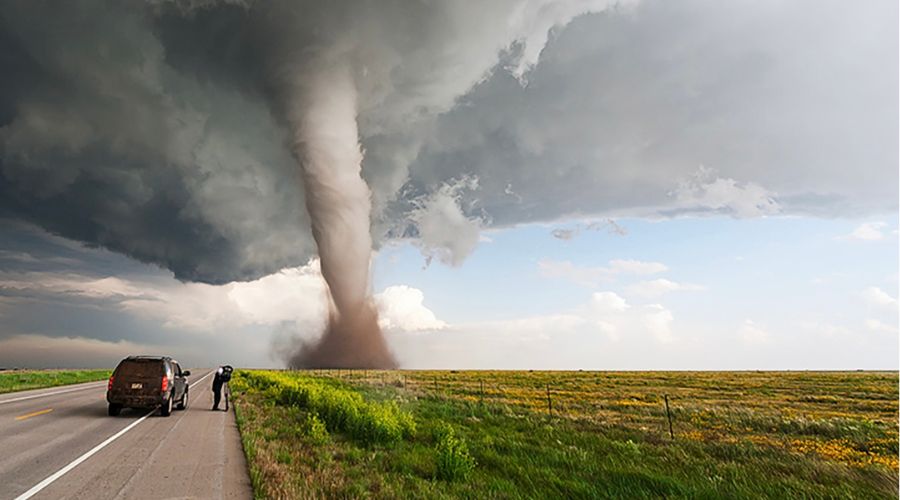Preparing for a Landscape Shoot in Extreme Weather
Before you face the elements, take a moment to think about preparation. This can make the difference between a good shot and a breathtaking one.
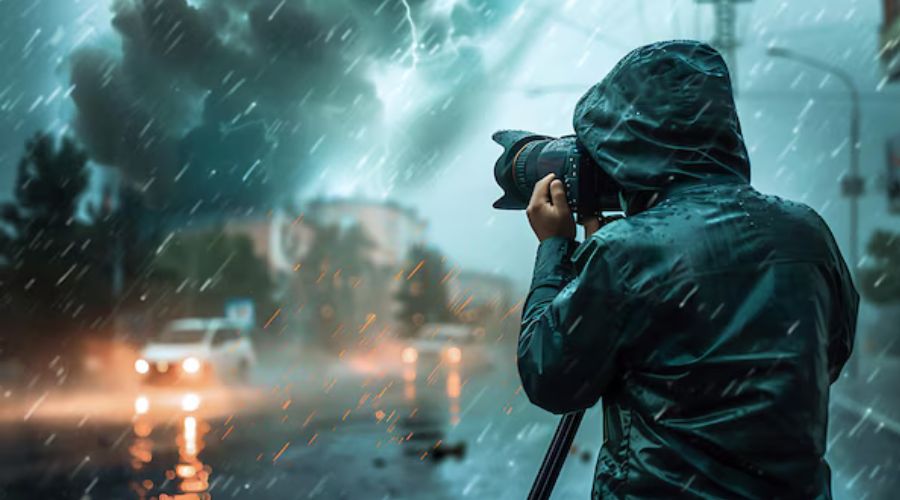
Be prepared! Pack your bag the night before like a boy scout, and remember, early birds catch the worms – or in this case, the golden light.
Essential Gear for Weather-Proof Photography
Donning rain covers on your camera is like putting galoshes on a toddler – it’s a must to avoid a mess. Your camera needs to stay dry, so don’t skimp on those rain sleeves.
Got a sturdy tripod?
It’s your best pal when the wind tries to play bully with your camera. And hey, if you’re shooting lightning, grab an intervalometer. It’ll be like catching fireflies, but way more epic.
Personal Safety and Weather Awareness
You wouldn’t walk into a lion’s den with steak pants, right? So don’t wander into extreme weather without understanding what you’re doing.
Keep your eyes peeled for the mood swings of Mother Nature. Sometimes she’s all sunshine and rainbows; other times, she throws tantrums with gusts strong enough to whisk you and your gear away.
Stick to the buddy system; it’s more fun to have someone to high-five when you snag that perfect shot.
Weather Apps and Tools for Timely Planning
Think of weather apps as your crystal ball. They tell you if you’ll bask in the sun or dance in the rain.
Timing is everything; align your shoots with the forecasts. By doing so, you’ll capture those moody clouds as they throw a shade party over the landscape. Plus, you might just dodge getting soaked, unless that’s your thing. No judgment here! 😉
Technical Tips for Capturing the Drama
You’re about to step into the thrilling arena of weather photography where Mother Nature offers a stage for some of the most dramatic landscape photos possible.
Camera Settings for Various Weather Conditions
Rain, shine, or storm, your camera settings can make or break the shot.
In bright sunlight, knock down your ISO to its lowest setting, squint through that viewfinder, and speed up your shutter for a crisp, clear capture.
When dark clouds roll in, don’t let your spirits fall with the barometer—bump up the ISO a tad and slow down that shutter to grab every shadow and highlight.
If the weather throws a curveball and you’re caught in a Hail Mary kind of situation, stand your ground. Widen your aperture, and snap that epic shot before you bolt for cover.
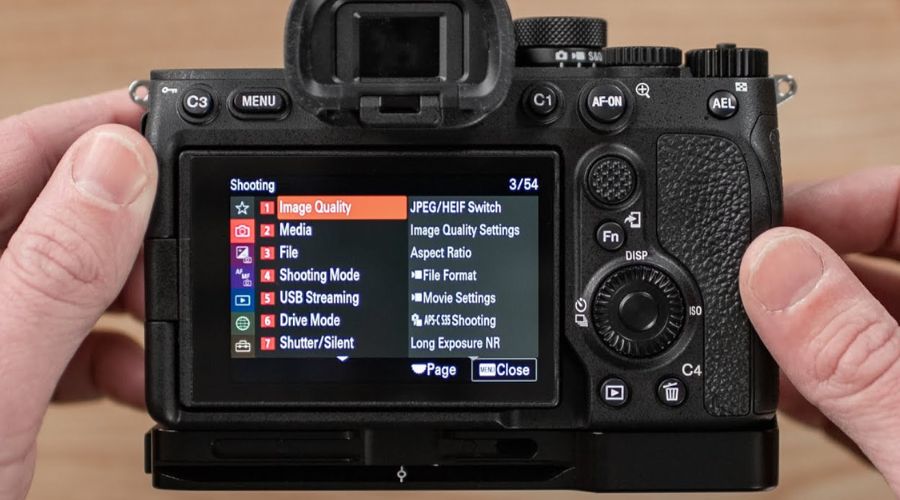
Go for a higher ISO for those misty, almost mythical mornings; just enough to cut through the fog without turning your photo into a grain fest.
Auto-mode’s like a fair-weather friend—it might bail when conditions get tough—so grab the wheel, switch to manual, and drive your camera settings like you mean it.
Long Exposure Tricks for Capturing Movement
Long exposure is the secret handshake of weather photography. It’s how you can turn that raging river into a silky sheet or those racing clouds into a heavenly streak across the sky.
Brace your camera on a tripod, dial in a slow shutter speed, and let the show commence.
While you’re capturing the dance of nature, be sure not to let the wind bully your setup. Embrace a remote shutter release to avoid any handshake that can blur your masterpiece.
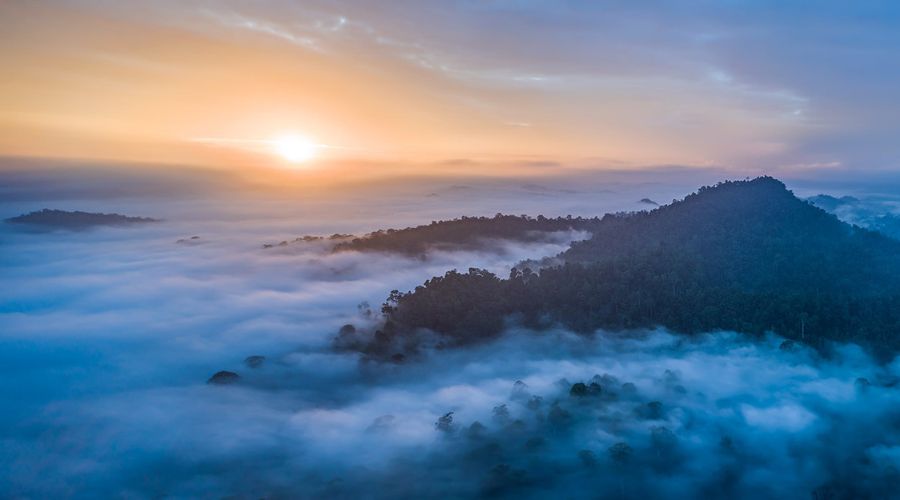
Always remember, with great power comes great responsibility.
That long exposure can suck in the light like a vacuum—so use the neutral density filters to keep that exposure in check, making sure your snaps don’t end up washed out.
Maximizing Natural Light in Overcast Situations
Overcast skies are not gloom and doom for your photography game.
In fact, those clouds can be your allies by scattering sunlight and eliminating harsh shadows, giving you the perfect softbox in the sky.
Embrace that natural diffuser, but keep an eye on your white balance. play it right and you’ll have colors popping with more zest than a lemonade stand in July.
No sun? No problem.
Bump up the shadows in post-processing and watch as your seemingly flat image sprouts new life quicker than a Jack in the Beanstalk.
Overcast can be your canvas, and you’ll be painting with light like the Van Gogh of the visual world with a little tweak here and there.
Composition Techniques for Striking Images
a little bit of know-how goes a long way to capture dramatic landscape photos when the weather is putting on a show.
Let’s dive into some composition tips that will transform gloomy skies into a canvas for striking images.
Using Leading Lines and Natural Features
Make Mother Nature your co-pilot and use her tricks to guide viewers’ eyes into your photo.
By using leading lines—you know, like roads, streams, or even a row of trees—you can steer viewers through your scene as if they’re on a roller coaster ride heading straight into the storm.
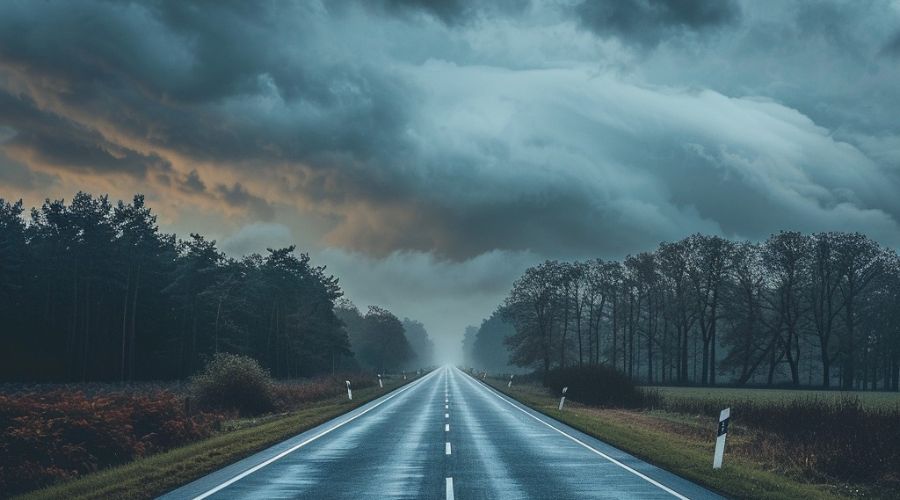
Now’s the time to hunt down those natural lines and put them to work!
Incorporating Foreground Interest in Stormy Settings
You’ve got rolling clouds overhead, but don’t forget to keep your feet on the ground too.
Adding a pop of interest in the foreground can turn a so-so snapshot into a ‘wow’ moment.
Ever see an old, gnarly tree in front of a brewing storm? It’s like peanut butter and jelly—a perfect match.
So next time the sky is a drama queen, find yourself a solid subject up front and watch your photos sing.
The Role of Negative Space in Cloudy Skies
Cloudy skies are a playground for the imaginative photographer. Don’t just focus on full-frame, cotton-candy cloud coverage. Embrace the empty spaces.
Negative space, which is basically the open sky in your photos, isn’t ‘nothingness’—it’s potential. It tells its own story. Use it like a pause in a sentence; it gives your viewers a moment to breathe and take it all in.
Creative Approaches to Different Weather Scenarios
Remember, Mother Nature’s mood swings are your canvas; storms, fog, and a blanket of snow are brushes to paint the scene.
Use these wild elements to capture dramatic and jaw-dropping pictures that tell a story of their own.
Fog and Mist: Mystery in the Landscape
Picture this: you’re gazing at a scene, and a shroud of fog creeps in, adding an air of mystery.
Capture this misty magic by shooting just before sunrise when the fog is thickest. Let the foggy veil soften the background; the trees peeking through can whisper secrets to the viewer.
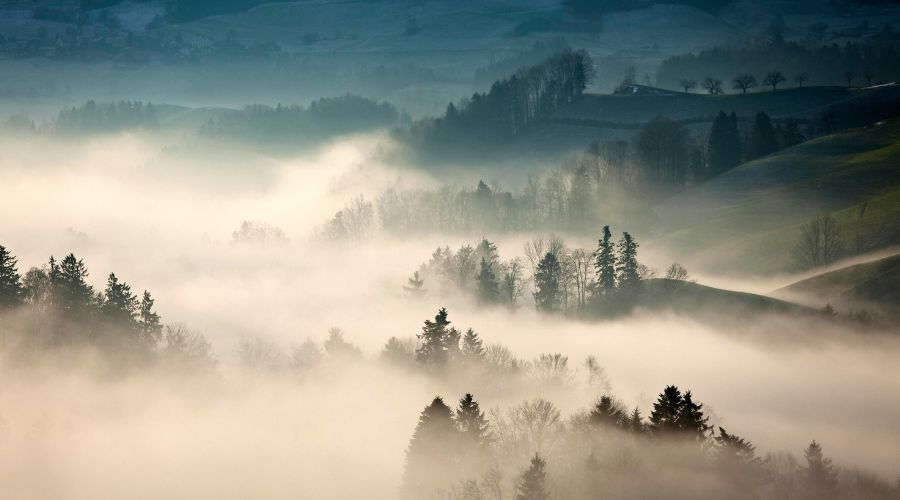
And hey, don’t be afraid if your shots look a bit ‘meh’ straight out of the camera. A tad of post-processing can turn them from forgotten to unforgettable.
Capturing the Raw Energy of Storms and Lightning
Brace yourself: storm photography is not for the faint of heart, but it’s a hoot and a half if you’re craving that adrenaline.
Chase those dark clouds, but safety first—don’t waltz into a storm without checking weather reports. Striking pictures need striking lightning: use a tripod and long exposures to snag that perfect zigzaggy bolt.
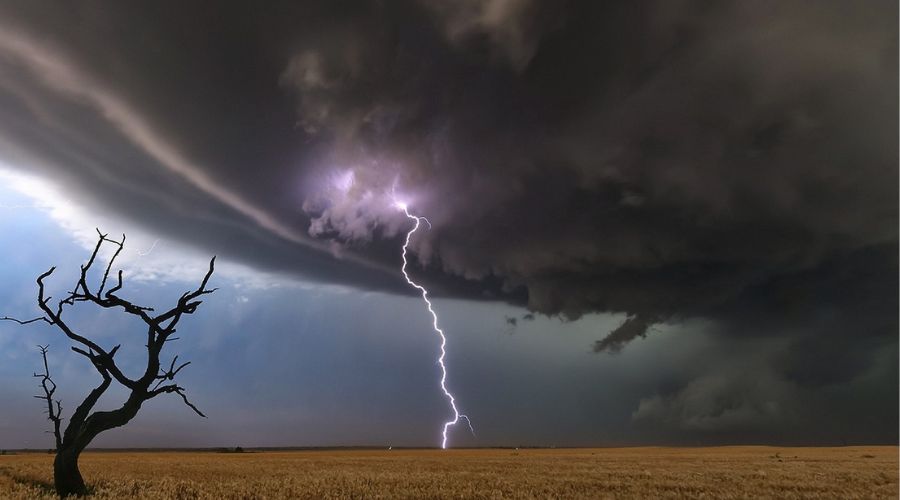
Remember, timing and patience are your pals; you might snap a dozen duds before you snag that electrifying masterpiece.
Winter Scenes: Snow and Ice as Artistic Elements
The chill of winter paints a serene portrait in white. Think of snow as a big ol’ reflector, bouncing light and adding brightness to your landscape shots.
Early morning after a fresh snowfall is prime time—everything looks smooth as butter.
Get down low to show patterns in the ice or capture snow-laden branches. The key here is to play around with your exposure; too little and your winter wonderland will look more grey than glacial bliss.
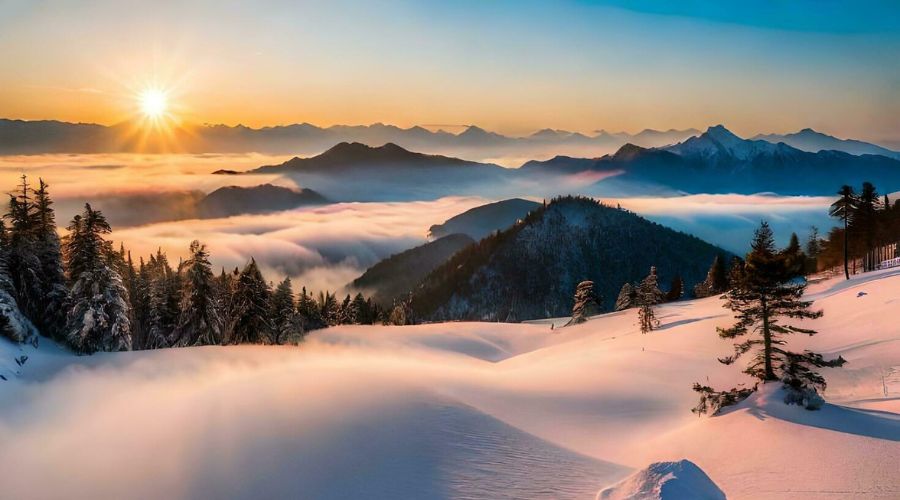
Now, take these weather photography tips and brave the elements to snag those dramatic landscape photos.
Whether shrouded in fog, charged with lightning, or blanketed in snow, each weather twist is an opportunity to capture landscapes with a punch.
Go ahead, give it a whirl, and click your way to some stunning snaps!
Edit and Post-Processing Techniques for Weather Photography
After you’ve captured the essence of the weather’s mood, diving into post-processing can turn those good photos into great ones. A sprinkle of editing magic helps items pop—a step you shouldn’t skip!
Enhancing Colors and Contrast in Gloomy Environments
Gloomy weather often means less saturated colors in your snaps. Boosting vibrance and contrast can bring a photo back to life.
Slide those settings like you’re turning up the volume on a rainy day’s favorite tune—just enough to make it sing, not scream.
Software Tips for Bringing Out the Drama
Some software tools are like a secret sauce for your weather shots. Use selective adjustments to darken skies or highlight the sparkle of rain on leaves.
Think of it like putting the spotlight on the most interesting actor on stage—the drama unfolds naturally.
Blending Exposures for Balanced Lighting
If the sky and land are fighting for attention in your frame, exposure blending can play peacekeeper.
Combine a well-exposed sky with an evenly lit landscape and witness the harmony. It’s like putting peanut butter and jelly on the same sandwich—for your eyes.
Remember, less is often more. Don’t go overboard with the edits, or you might just edit the soul right out of your scene.
Find a sweet spot where the weather’s natural drama shines through. That’s your ticket to compelling landscape photos that tell a story as unique as Mother Nature herself.
Wrapping It Up: Catch the Perfect Storm
You’ve hung out with the clouds, danced in the rain, and chased the perfect lightning bolt.
Ah, the life of a storm chaser with a camera!
Practice makes perfect, or so they say, and it’s true with capturing those sky-high dramas too. So don’t let a bit of wind knock you over; stand firm and click away. Your knack for dramatic captures under moody skies is going to make waves.
Whether it’s a sprinkle or a storm, your photos will tell a story that only you can. Say cheese to the clouds and watch your gallery grow!
Remember, the perfect shot is just a storm cloud away. Keep your eyes on the skies, and your weather app closer.
You’re now ready to snap Mother Nature’s moody moments like a pro. Keep those lenses clean, and your batteries charged, because you never know when the skies will put on their next big show.
Frequently Asked Questions
What are the best weather conditions for dramatic landscape photos?
You hit the jackpot with stormy skies! Big, moody clouds add a ton of drama to your shots. Sunrise and sunset are prime time too – they paint the sky with colors that pop. And don’t forget about the magic of the golden hour; when the sun plays peek-a-boo with the horizon, your photos will sing.
How do I protect my camera gear in bad weather?
Dress your camera in its raincoat – a weatherproof cover. Keep those silica gel packets handy to fight off moisture like a champ. And remember, zipping your gear into a plastic bag can save the day when the weather throws a tantrum.
Any tips for capturing lightning in photos?
For Zeus’ light show, get your tripod to stand tall. Use a slow shutter speed to invite the lightning in for the shot. And let’s not play chicken with Mother Nature – safety first, okay? Keep a safe distance and enjoy the electric performance from afar.
Should I use any filters for weather photography?
Slap a polarizing filter onto your lens. It’s like sunglasses for your camera. This little trick cuts out glare, punches up the blues and greens, and gives those clouds some serious stage presence. Say goodbye to washed-out skies!
What camera settings should I use for weather photography?
Keep it tidy with a lower ISO to avoid grainy gossip in your pics. Adjust your aperture based on the light’s mood; a darker sky might need a bigger eye – I mean, aperture. And play with shutter speed; you’re the conductor of the light orchestra!
How can I improve composition in my landscape shots?
Remember the rule of thirds; it’s like a tic-tac-toe board for knockout composition. Place interesting bits where the lines cross for snaps that hook the viewer. And keep an eye out for natural lines – they lead folks through your photo like a tour guide.
Can smartphone cameras capture good weather photos?
Smartphones can snap some wicked weather pics. Just treat it like a big camera – clean the lens, hold steady, and play with angles. You’ll be the talk of the town with your snazzy smartphone snaps.
What’s the secret to capturing raindrops in photos?
Get close and personal for a raindrop rendezvous. A macro lens is your best pal for those up-close-and-personal shots. A faster shutter speed freezes the dance of the drops, leaving everyone misty-eyed at their beauty.
How can I stay safe while photographing in extreme weather?
Don’t be a hero; gear up with the right clothes and a plan B. Keep your eyes peeled on the weather updates, and know when it’s time to hightail it out of there. Mother Nature’s no joke, and your safety’s like top-dog important.

